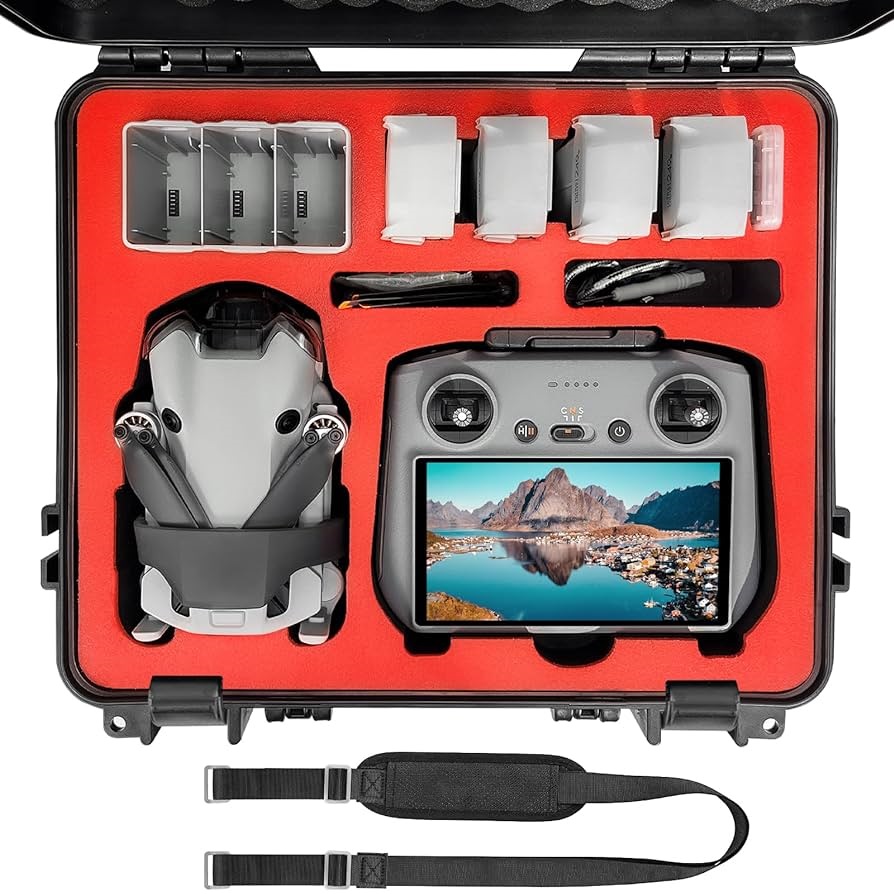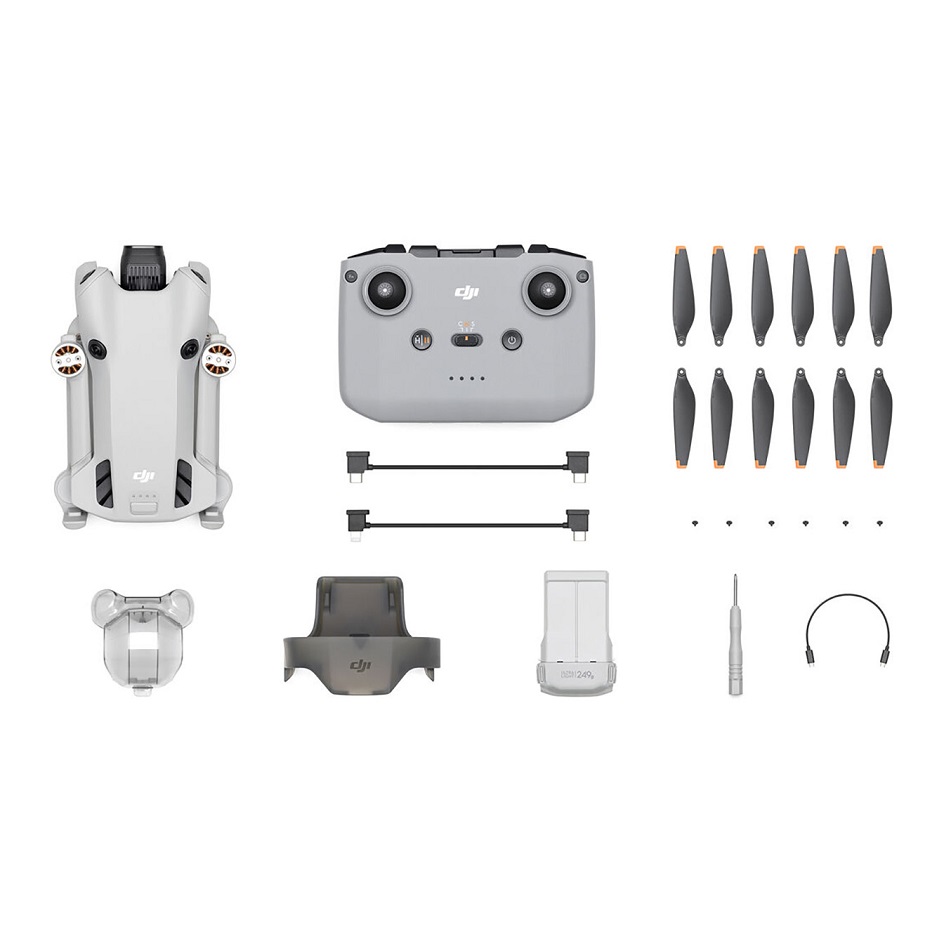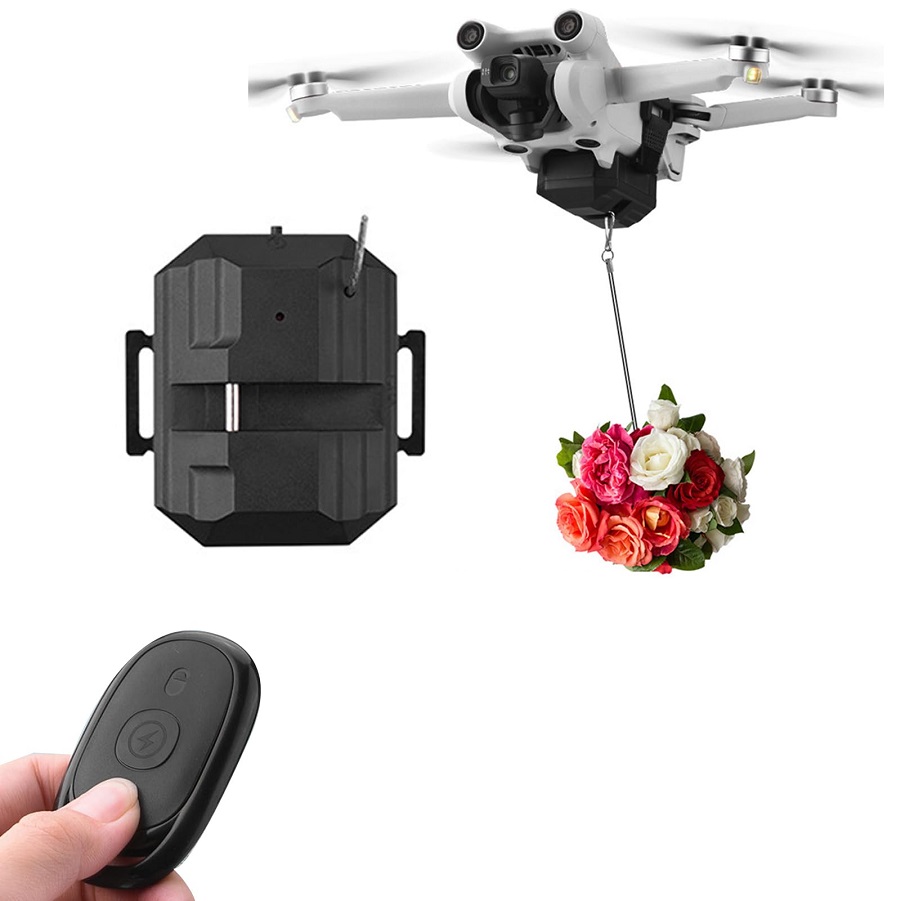Introduction to the DJI Mini 4 Pro and DJI Mini 3 Pro
Exploring the world of compact drones introduces us to DJI‘s impressive models: the DJI Mini 4 Pro and the DJI Mini 3 Pro. These drones stand out in the crowded market for their blend of portability and high-performance features. Designed with both the hobbyist and the professional in mind, they offer 4K video recording, robust obstacle sensing, and a host of intelligent flight modes.
The DJI Mini 3 Pro, highly regarded for setting new standards in compact drone design, balances performance and convenience brilliantly. It’s simple to carry along on any trip, packed with features that any drone enthusiast would appreciate.
In contrast, the DJI Mini 4 Pro steps up the game with advanced technology. It comes enhanced with superior sensors, more sophisticated obstacle avoidance, and elevated video capabilities like smoother HDR recording. It’s a top pick for users who demand the very latest in drone innovation within a small footprint.
This article dives into a detailed comparison between the DJI Mini 4 Pro and the DJI Mini 3 Pro. We’ll lay out their specifications, design, features, and performance to help you decide which drone might be the best pick for you. Whether you prioritize affordability or cutting-edge functionality, this comparison will provide clear insights into both models.

Key Specifications and Design Features
When comparing the DJI Mini 3 Pro and the DJI Mini 4 Pro, key specifications and design features are essential to consider. These crucial distinctions help potential buyers understand what each drone offers. Both models boast compactness, cutting-edge technology, and a range of specs aimed at different user needs.
Comparative Size and Portability
The DJI Mini series is known for its travel-friendly design. The DJI Mini 3 Pro and the DJI Mini 4 Pro maintain this tradition. They are nearly identical in size, but the DJI Mini 4 Pro is slightly larger. Despite this, both drones tuck neatly into small bags, ready for any adventure.
The dimensions when folded for the Mini 3 Pro are 145 x 90 x 62mm, which is a tad smaller than the Mini 4 Pro’s dimensions of 148 x 94 x 64mm. Unfolded measurements add a bit more to the Mini 4 Pro, creating a marginally larger footprint. Yet, both drones remain easy to carry and deploy quickly when needed.
Weight and Build Material Differences
Weight is a critical factor for drone enthusiasts. Both drones weigh in at 249g, skirting the regulatory requirements in many regions. This allows easier access to flight and fewer restrictions for drone pilots. DJI has managed to keep these drones below the 250 gram-mark while packing in more advanced features into the DJI Mini 4 Pro.
The build materials contribute to this weight optimization. Both drones use a mix of durable plastics designed to balance robustness with the need to save on weight. These materials hold up well under regular use without bogging down the drones with extra heaviness.
In sum, these key specifications and design features underline the drones’ potential for portability and compliance with drone regulations, offering enthusiasts two choices that do not sacrifice performance for convenience.
Performance and Flight Characteristics
Understanding how a drone performs is crucial for pilots. The DJI Mini 4 Pro and DJI Mini 3 Pro have similar performance stats but cater to different pilot needs. Below, we delve into their battery life, flight time, speed, agility, and flight modes.
Battery Life and Flight Time
Battery life greatly affects flying experiences. Both drones offer up to 34 minutes of flight time. This is ample for capturing great footage or enjoying extended flights. Their batteries are efficient, making the most out of each charge.
Speed, Agility, and Flight Modes
Speed and agility define a drone’s handling. These models can reach 35.79 mph, offering quick, responsive movements. Agile controls allow for smooth navigation through various environments. Each model boasts intelligent flight modes. They enable creative shots and hands-free flying, tailoring to pilot skill levels. The DJI Mini 4 Pro and DJI Mini 3 Pro shine in providing easy, yet dynamic flight experiences.
Camera Capabilities and Comparison
When examining the dji mini 3 pro vs dji mini 4 pro drone specs, camera capabilities play a pivotal role. Both drones come equipped with high-quality cameras, yet display distinct differences in performance and features.
Resolution and Frame Rates
The DJI Mini 3 Pro and DJI Mini 4 Pro share impressive 4K video capabilities. They offer clear, detailed footage for drone enthusiasts and professionals. Despite similarities, the DJI Mini 4 Pro outshines with higher frame rates. It captures 4K video at 100fps, providing smoother slow-motion effects than the Mini 3 Pro’s 60fps limit.
Low-light Performance and Color Modes
Low-light performance is key for capturing quality footage at dawn or dusk. The DJI Mini 4 Pro holds an advantage with Night Shots, enhancing video quality in low lighting. Both drones offer standard color modes. However, the Mini 4 Pro adds 10-bit HLG and D-Log M modes, granting skilled editors greater flexibility in post-production color grading.
Zoom and Live View Quality
Zoom capabilities allow pilots to scout and frame shots from afar. The Mini 4 Pro features a 1-3x digital zoom, while the Mini 3 Pro offers up to 2x zoom. Live view quality ensures a clear view of the drone’s camera feed. While both offer excellent live feeds, the Mini 4 Pro delivers at a higher 60fps, compared to the Mini 3 Pro’s 30fps, ensuring smoother previews of potential shots.
Advanced Features and Intelligent Flight Modes
When you look at the dji mini 3 pro vs dji mini 4 pro drone specs, advanced features stand out.
Obstacle Sensing Technologies
Both drones pack obstacle sensing tech, but the Mini 4 Pro goes further. It senses obstacles in all directions. This tech lets you fly with more confidence, reducing the risk of crashes.
The Mini 3 Pro senses obstacles forward, backward, and downward. It’s enough for most flights, yet not as advanced.
Autonomous Flight Capabilities
Autonomy in flight is big for both drones. They both follow set patterns to capture shots on their own. Modes like Dronie and Helix are included.
The Mini 4 Pro offers more though. It tracks subjects 360 degrees with touch tracing. Cruise Control lets it fly a path while you focus on the shot. This means more complex following and filming, hands-free.
In summary, the Mini 4 Pro’s tech is more advanced for obstacle sensing and autonomy. The Mini 3 Pro, while capable, is more suited to simpler flights and filming.
Controllers and User Interface
Navigating a drone’s flight accurately depends on a good controller and interface.
Comparison of RC Controllers
DJI outfits the Mini 4 Pro with the latest RC 2 controller and the Mini 3 Pro with the RC controller. Both models have 5.5-inch displays for clear, hands-on management. The RC 2 boasts enhanced features like a higher live transmission rate and better built-in display. While both controllers provide great control, the RC 2 edges out with modern tech.
Live Transmission Quality
The Mini 4 Pro uses OcuSync 04 for a stable six-mile reach, surpassing the Mini 3 Pro’s OcuSync 03 with its five-mile range. The Mini 4 Pro also transmits live video at 60fps, which is twice as smooth as the Mini 3 Pro’s 30fps. This ensures a clearer and more real-time viewing experience, crucial for precise piloting and shot framing.
Pricing Analysis and Value Proposition
When selecting the right drone, cost is a key factor. The DJI Mini 4 Pro and DJI Mini 3 Pro offer varied features, but how do these affect their pricing? We analyze the cost and value of these drones.
Cost Comparison and Package Options
Prices for drones reflect the technology they house. The DJI Mini 3 Pro, an older model, costs less. Packages for this drone start at lower prices, making it attractive for budget-conscious buyers.
However, the DJI Mini 4 Pro, as the newer model, carries a higher price tag. It boasts advanced tech and updated features that justify the cost. For instance, better obstacle avoidance and higher frame rates in video recording are seen in the Mini 4 Pro.
When making a purchase, consider the variant you choose. Each drone comes in different set-ups with various accessories. These can include multiple batteries, chargers, and carry cases, known as ‘Fly More Combos’. These combos provide added value, despite the upfront price increase.
Price versus need is crucial. If cutting-edge features and the latest developments are vital, the Mini 4 Pro makes sense. But if you are new to drones or need it for basic flying and filming, the Mini 3 Pro may suffice. Both drones represent strong value propositions in the compact drone market.
Final Thoughts on Choosing the Right Drone for Your Needs
When it comes down to making your choice, both the DJI Mini 3 Pro and DJI Mini 4 Pro are outstanding drones that cater to different flyers’ needs. Your decision will hinge on several key points highlighted throughout this showdown. Let’s recap important takeaways to help you make an informed decision.
First, consider what you value most in a drone. If portability without sacrifice on quality is crucial, both models meet the mark. They blend lightweight design with advanced camera systems. If budget is your primary concern, the DJI Mini 3 Pro might be your best bet. It offers a great blend of features for its price.
However, for those seeking the latest tech and higher performance, the DJI Mini 4 Pro shines with enhanced video frame rates, improved obstacle avoidance, and additional intelligent flight features. Its upgraded Night Shots capability and color modes also offer more for the creative professional or enthusiast.
Think about where you’ll fly and what you’ll film. If your flying adventures demand cutting-edge technology for dynamic shooting, the Mini 4 Pro is geared for you. Its advancements in autonomous flight capabilities allow for more complex and creative videography.
Lastly, remember that both drones will grow with you as you polish your piloting skills. But the longer-term investment in technology might lean towards the Mini 4 Pro due to its newer tech and potential for longer software support. If these advanced features align with your drone usage plans, investing more may yield the best value.
Ultimately, whether you choose the DJI Mini 3 Pro or the DJI Mini 4 Pro, you’re bound to enjoy the sky-high experiences that come with DJI’s renowned drone technology. Take your time, weigh your needs against the features and costs, and you’ll find the drone that’s right for you.


